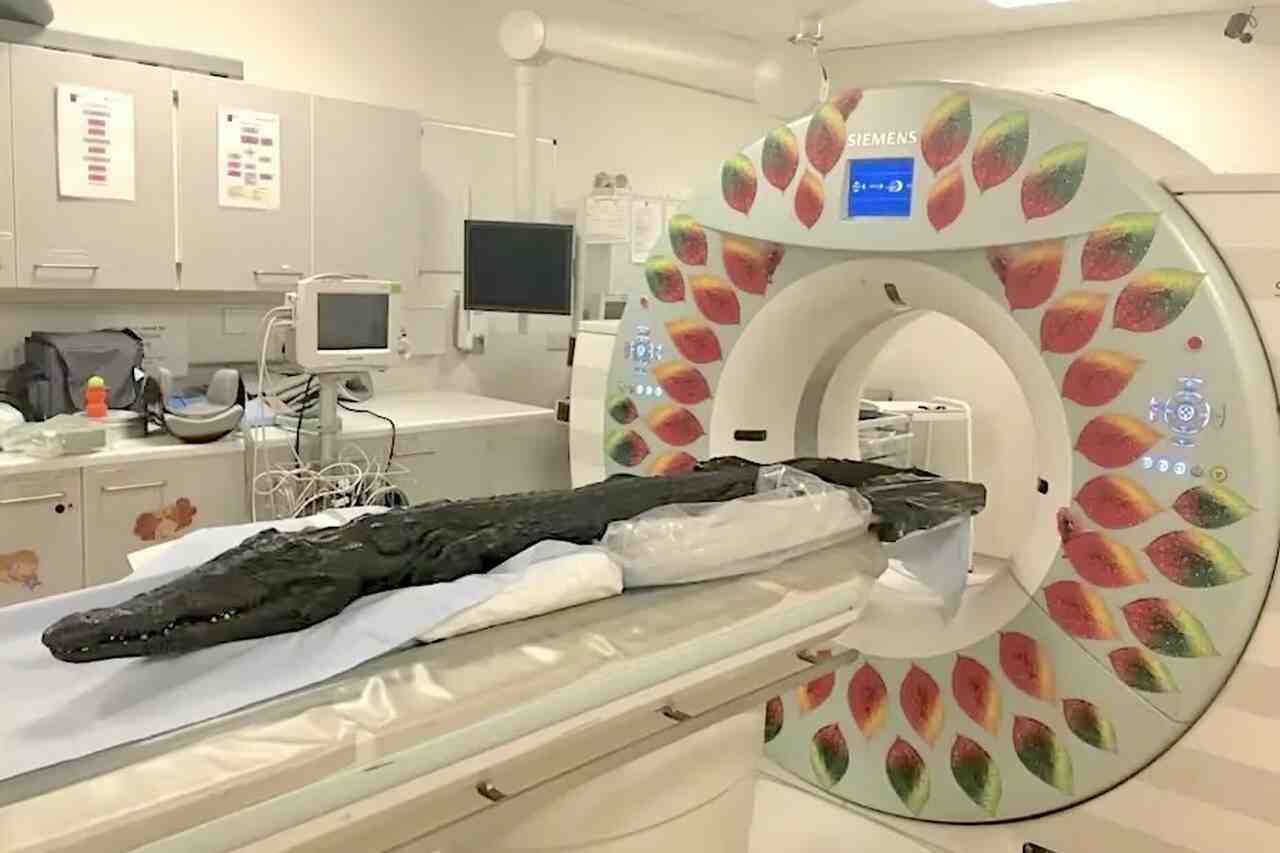
In a recent study, scientists have discovered extraordinary details about the final hours of a crocodile’s life that was mummified by ancient Egyptians.
Through a CT scan, Lidija McKnight from the University of Manchester, England, and her colleagues were able to determine how the animal died and how the body was treated after death.
In an article on the website The Conversation, McKnight explained that most animal mummies were created as offerings or votive gifts to the gods.
Crocodiles were associated with Sobek, Lord of the Nile and the god whose presence signaled the annual flooding of the Nile, which provided water and nutrient-rich silt to their farmlands.
“Crocodiles were mummified in large numbers as offerings to Sobek. They were used as talismans throughout pharaonic Egypt to ward off evil, either by wearing crocodile skins as clothing or hanging a crocodile above the doors of houses,” the researcher explained in the article.
However, most crocodile mummies are of small animals, suggesting that the Egyptians had the means to hatch and keep the young alive until they were needed.
“Archaeological evidence supports this theory, with the discovery of areas dedicated to egg incubation and raising young crocodiles. Some were pampered as cult animals and died a natural death.”
The mummified crocodile analyzed in the study is part of the collection at Birmingham Museum and Art Gallery in the UK and measures 2.23 meters in length. Medical imaging techniques allow researchers to study ancient artifacts without destroying them.
Through X-rays and CT scans, the scientists discovered that the animal’s digestive tract was filled with small stones known as “gastroliths.” Crocodiles often swallow small stones to help them digest food and regulate buoyancy.
The gastroliths suggest that the embalmers did not perform evisceration, the process of removing the internal organs to slow down decay. Among the stones, the images also revealed the presence of a metal hook and a fish, according to McKnight.
With this in mind, the study suggests that large mummified crocodiles were captured in the wild using hooks baited with fish. “Modern technology is helping us learn more and more about our ancient past. I can only imagine what secrets technology will help reveal in the future,” she added.
This content was created with the help of AI and reviewed by the editorial team.

